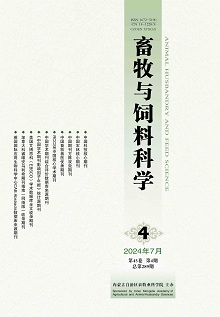Select
Research Trend and Hotspot Analysis of Heavy Metal Passivation during Organic Waste Composting Process Based on Bibliometrics
ZHANG Pengju, WANG Bo, Sachula, LI Wenting, ZHANG Chunhua, YANG Ding, LI Shengli, JIN Lu, LIU Wei, ZHANG Chongzhi, HU Xiaoxiao, SUN Haizhou
Animal Husbandry and Feed Science
2024, 45 (3 ):
40-49.
DOI: 10.12160/j.issn.1672-5190.2024.03.006
[Objective] The aim of the present study was to analyze the research trend and hotspot of heavy metal passivation during organic waste composting process. [Method] The literature published from 2000 to 2022 and indexed by the Web of Science (WoS) core collection database on heavy metal passivation during organic waste composting process were used as the data source. CiteSpace 6.2.R6 and VOSviewer 1.6.18 bibliometric visualization software were employed to assess the number of publications and the corresponding countries (regions), authors, institutions and keywords, and to clarify the research trend and hotspot in this research field. [Result] From 2000 to 2022, a total of 1 266 papers on heavy metal passivation during organic waste composting process were published, with an overall upward trend in annual publication volume. From 2020 to 2022, 345 papers were published, accounting for 27.25% of the total number of publications. Chinese scholars led the research field in terms of publication volume by countries (regions), with 301 papers published, accounting for 23.78% of the total number of publications. From the perspective of publication volume and collaborative relationships among the authors, KALAMDHAD Ajay S and ZHANG Zengqiang had the highest number of publications, and both published 23 papers, accounting for 1.82% of the total number of publications. The highest number of collaborative authors were observed between the teams of ZHANG Jiachao and ZENG Guanming, indicating an intimate collaborative relationship. From the perspective of institutional publication volume and collaborative relationships, the Spanish National Research Council ranked the first with 96 papers published, accounting for 7.58% of the total number of publications. The Spanish National Research Council and the Chinese Academy of Sciences were the most active institutions in this research field and had the closest collaboration with the other institutions. The top 6 keywords with high occurrence frequency were heavy metals, sewage sludge, municipal solid waste, organic matter, soil and compost, with occurrence frequencies of 724, 441, 210, 187, 158 and 158, respectively. Among the top 10 keywords with high occurrence frequency, sewage sludge, bioavailability, growth, heavy metals, municipal solid waste and soil had intermediary centrality greater than 0.1, and their intermediary centralities were 0.78, 0.52, 0.42, 0.30, 0.25 and 0.18, respectively. A total of 10 categories of keywords were clustered in this research field, including sewage sludge, organic amendments, organic fraction of municipal solid waste, greenhouse gas, C/N ratio, heavy metals, organic waste, and so on. The keyword zinc had the highest burst strength at 16.57 and received attention from 2004 to 2015. Biochar, food waste, microbial community, transformation and organic amendments were the dominant burst keywords from 2017 to 2022. [Conclusion] This study clarified the research trend and hotspot of heavy metal passivation during organic waste composting process. The impacts of different organic wastes on heavy metal passivation, the form transformation and stability of heavy metals in organic waste composting, and the enrichment and transfer of heavy metals in composting products may be the focus of the future research.
Reference |
Related Articles |
Metrics







